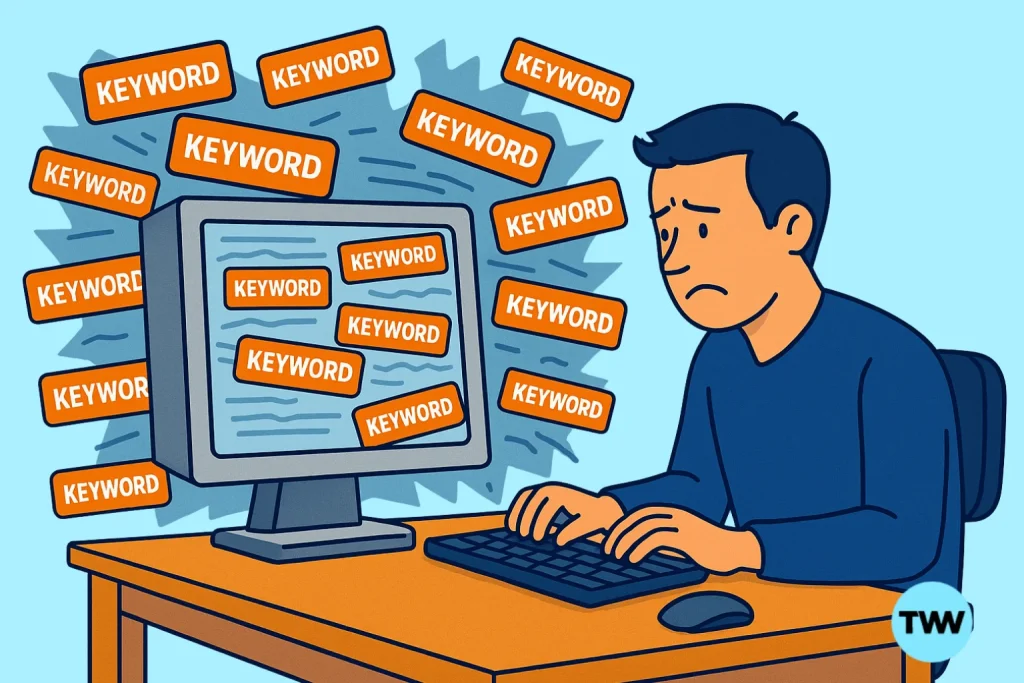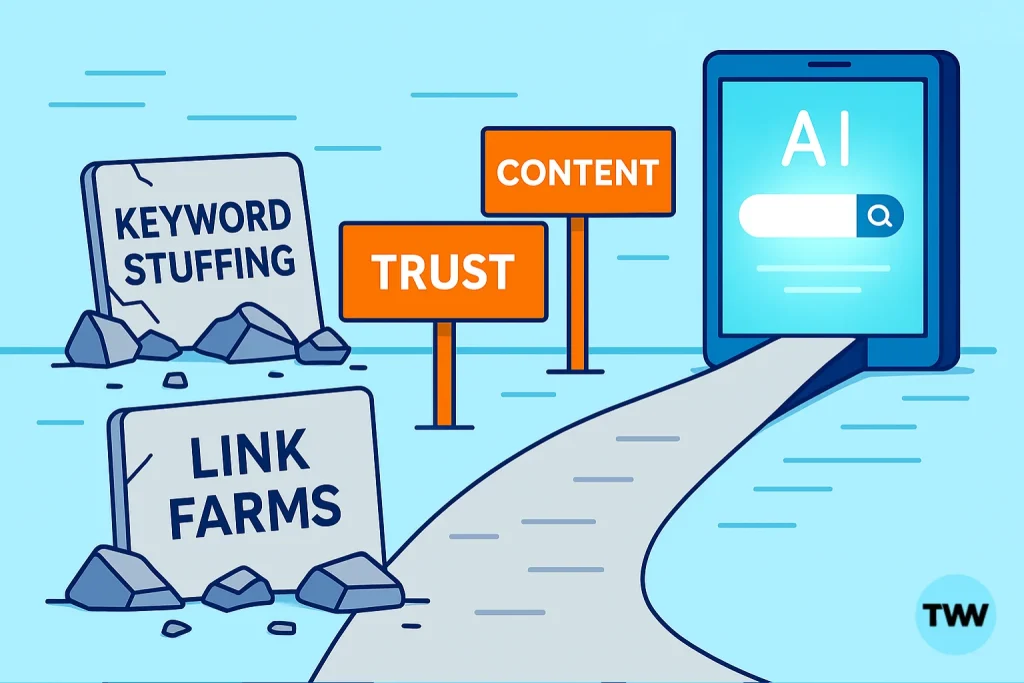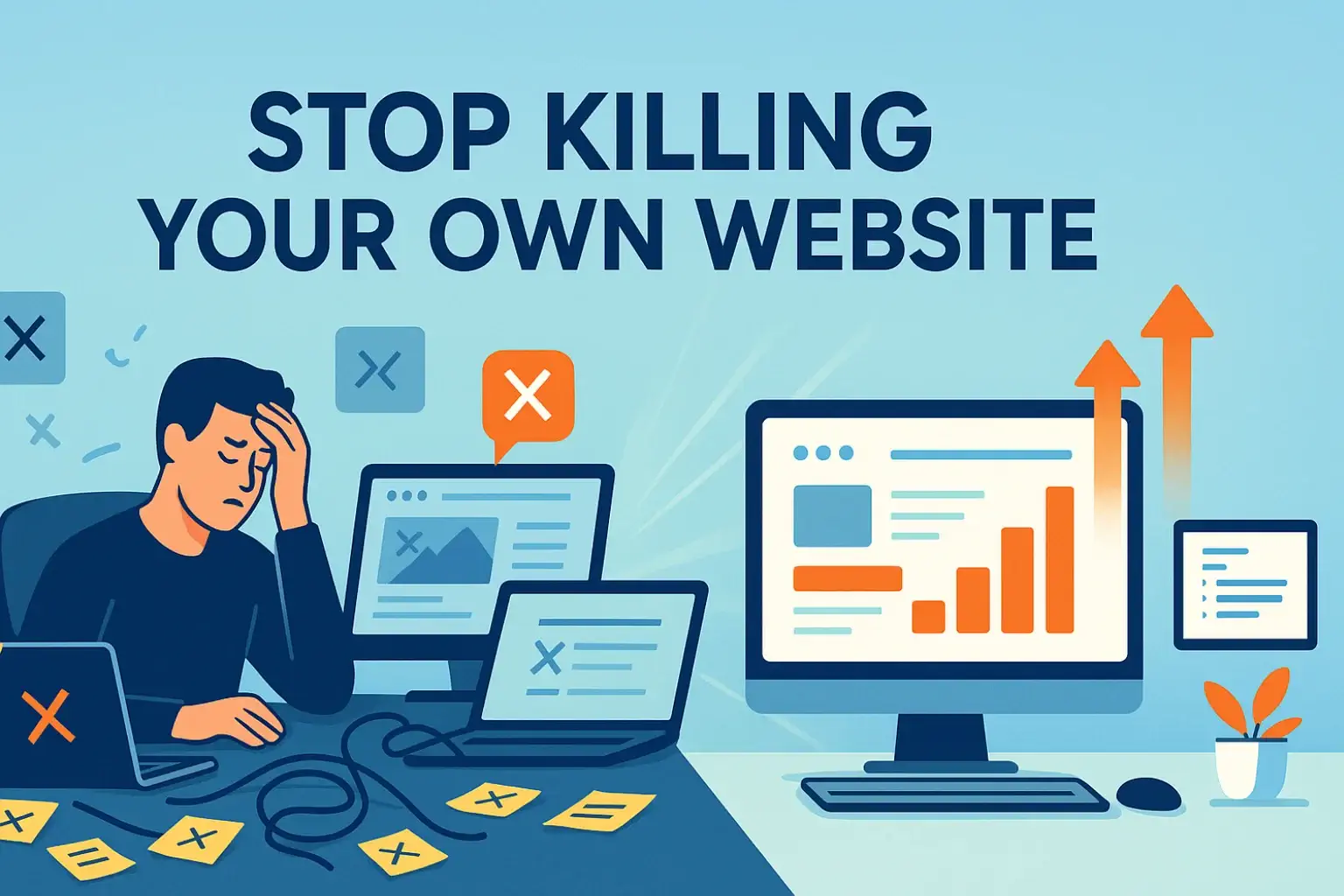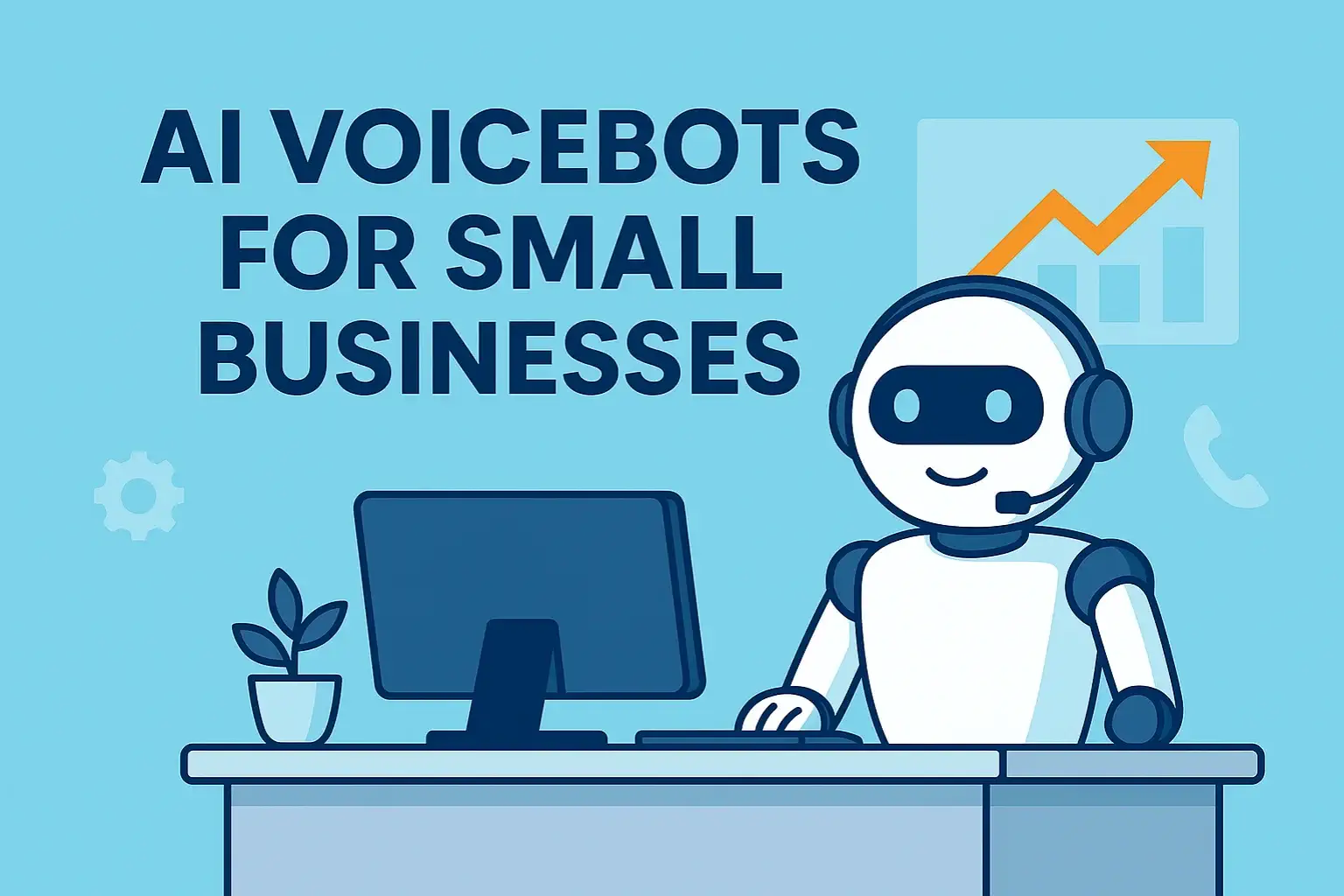Explore the history of SEO, major algorithm updates, and the future of search engine optimization trends.
Once upon a time, SEO was all about cramming keywords onto a page and calling it a day. Fast forward to today, and the evolution of SEO is a wild ride of algorithm smackdowns, mobile revolutions, and AI shaking up the game. Buckle up, we’re about to dive into the history of SEO and see what the future of SEO might look like when machines join the party.
Table of Contents
- Introduction: Why SEO Still Matters
- The Birth of SEO — Keyword Era
- Link-Building and Authority Shift
- Google’s Big Algorithm Updates
- Mobile and Voice Search Revolution
- Modern SEO: UX, E-E-A-T, and AI
- The Future of Organic SEO
- Lessons from the Evolution of SEO
- Is Google Still Relevant?
Introduction: Why the Evolution of SEO Still Matters
If you’ve been online long enough, you’ve probably noticed that the evolution of SEO feels a bit like watching technology grow up. What started as a messy experiment in the 1990s is now one of the most powerful forces behind how we discover information, shop, and even make daily decisions.
The history of SEO is filled with wild stories: marketers stuffing keywords into white text on white backgrounds, link farms popping up overnight, and search engines being tricked into ranking absolute garbage. Back then, what passed as SEO best practices would make Google’s algorithms laugh today.
But here’s the truth: the evolution of SEO isn’t just a nerdy marketing story. It’s a story about how humans use technology, how businesses fight for attention, and how search engines constantly adapt to keep the game fair. And just when we thought we had it figured out, AI came charging in, rewriting the rules all over again.
So, let’s take a ride through the chaos, the updates, the wins, and the fails that shaped search into what it is today. By the end, you’ll not only see where we came from but also get a clear picture of where the future of SEO is heading.
The Birth of SEO: Early History of SEO and Keyword Era

The early 2000s were the Wild West for search engines. If you wanted to rank, you didn’t need design, strategy, or even good content. You just needed keywords — lots of them.
This was the messy beginning in the history of SEO, when webmasters would jam the same word into a page a hundred times, hide it in tiny text, or even make it the same color as the background. To the untrained eye, the website looked normal. But under the hood, it was stuffed like a Thanksgiving turkey.
At the time, this was considered cutting-edge SEO best practices. The logic was simple: more keywords = more visibility. And it worked… for a while. Search engines weren’t smart enough yet to tell the difference between a valuable article and a spammy page, so those who gamed the system reaped the rewards.
This era shows how the evolution of SEO started as a cat-and-mouse game. People weren’t writing for humans; they were writing for machines. It was raw, it was chaotic, and honestly, it was kind of hilarious looking back.
But here’s the kicker: even in that chaos, the seeds of modern SEO were being planted. Search engines realized they needed to grow smarter, and fast. That’s when things really started to shift.
Link Building in the Evolution of SEO: Authority and Backlinks
After the keyword free-for-all, Google rolled out PageRank — and suddenly, links became the hottest commodity online. The logic was brilliant: if a lot of sites linked to yours, you must be important. Simple, right?
Well, simple turned into chaotic pretty quickly. Overnight, the history of SEO shifted gears. Instead of stuffing keywords, people were now obsessed with building backlinks. The more, the better. Quality? Who cared. This was the start of SEO algorithm updates becoming the sheriff in town, because spammy tactics were getting out of control.
Entire industries popped up around “link farms” — networks of random websites that existed solely to link to each other. Article directories churned out low-quality content stuffed with backlinks. And guess what? For a while, it worked. If you had a thousand links pointing to your site, you could outrank just about anyone.
Back then, what passed as SEO best practices was basically: “Get as many links as possible, no matter where they come from.” Looking back, it feels insane — like trying to win a popularity contest by hiring strangers to clap for you.
But as with every stage in the evolution of SEO, the honeymoon didn’t last. Google saw what was happening, and they weren’t about to let link spam ruin their shiny new search engine. And so, the crackdown began.
SEO Algorithm Updates: Panda, Penguin & Hummingbird
By the early 2010s, Google had seen enough of the chaos. Keyword stuffing and link farms were wrecking the quality of search results, and users were starting to notice. That’s when the SEO algorithm updates rolled out — and they changed everything.
First came Panda (2011), which hammered thin, low-quality, and duplicate content. Sites filled with junk articles dropped off the map overnight. Then Penguin (2012) swooped in, targeting spammy backlinks and shady link-building schemes. Suddenly, the shortcuts that had fueled rankings became landmines.
And then came Hummingbird (2013), which flipped the script. Instead of obsessing over exact keywords, Google began focusing on meaning and context. This was a massive moment in the evolution of SEO, because for the first time, the search engine wasn’t just matching words — it was understanding intent.
The history of SEO up to this point had been all about finding loopholes. But after these updates, the game became about serving people first, machines second. Content creators had to rethink their approach. Writing for humans — clear, valuable, and relevant — became the new SEO best practices.
And this is also when we started seeing the first whispers of search engine optimization trends that dominate today: quality content, context, and a focus on solving real problems. The days of easy manipulation were over.
Search Engine Optimization Trends: Mobile and Voice Search Revolution
Just when businesses thought they’d finally adjusted to Google’s SEO algorithm updates, another tidal wave hit: the smartphone boom. Suddenly, search wasn’t just happening at desks anymore — it was happening in pockets, cars, and even while people were standing in line at the coffee shop.
Google responded with mobile-first indexing, meaning that if your site wasn’t mobile-friendly, you could kiss your rankings goodbye. This marked one of the most important search engine optimization trends of the decade. Sites that loaded slow, looked clunky, or were impossible to read on a phone were left behind.
And then came voice. With the rise of Siri, Alexa, and Google Assistant, people started talking to their devices like they were friends. Instead of typing “best pizza NYC,” they’d ask, “Where’s the best pizza near me?” This shift pushed the future of SEO into new territory: conversational queries, natural language, and long-tail keywords.
Of course, SEO best practices had to evolve yet again. It wasn’t enough to just write content stuffed with phrases — now content needed to answer real questions the way real humans asked them. This was another big leap in the evolution of SEO, proving once again that search follows people, not the other way around.
Modern SEO Best Practices: UX, E-E-A-T, and AI

Today, the evolution of SEO has taken us far beyond keywords and backlinks. Search engines don’t just want to see words on a page — they want to know if those words are helpful, trustworthy, and coming from a credible source.
That’s where E-E-A-T comes in: Experience, Expertise, Authoritativeness, and Trustworthiness. In plain English? Google wants content that’s written by people who know what they’re talking about, who actually do the thing, and who can back it up with proof. It’s the new foundation of SEO best practices.
But it doesn’t stop there. Google now cares about how a site feels to use. Enter Core Web Vitals — a fancy way of measuring site speed, interactivity, and visual stability. If your site lags, jumps around, or annoys users, your rankings suffer.
Meanwhile, AI is rewriting the playbook again. Tools like ChatGPT and Google’s own generative search are redefining search engine optimization trends. We’re no longer just competing for a spot on a page of blue links, we’re competing for inclusion in AI-generated answers.
The future of SEO is clear: it’s about humans first, algorithms second. If your content is genuinely helpful, engaging, and trustworthy, you win. If it feels like a trick? You lose. It’s as simple — and as complicated — as that.
The Future of SEO: AI, Personalization & Trends
So, where is all of this heading? If the evolution of SEO has taught us anything, it’s that search never stands still. Just when we think we’ve cracked the code, something new reshapes the game.
The future of SEO is being written right now, and it’s powered by AI, personalization, and new forms of search. Instead of typing into a box, we’re moving into a world where visual search, voice search, and AI-driven answers become the norm. You might take a photo of a pair of shoes and ask Google where to buy them. Or you might rely on an AI assistant to summarize the best content for you, skipping the old list of links entirely.
For creators, this means doubling down on SEO best practices that focus on trust and value. Your content must answer questions, provide solutions, and build credibility, because machines are only going to recommend what feels authentic.
The latest search engine optimization trends are already showing this shift. Video SEO, schema markup, and multimedia content are becoming more important than ever. If your brand only lives in text, you’ll risk being invisible in a world of images, video, and AI chat results.
In short: the future of SEO is about connection, not manipulation. If you build digital assets that serve humans first, algorithms will follow. The next wave won’t be won by those who game the system — it’ll be won by those who earn trust.
Lessons from the Evolution of SEO

Looking back, the evolution of SEO feels like a survival-of-the-fittest story. From the keyword stuffing chaos of the 2000s to the SEO algorithm updates that reshaped everything, one lesson keeps repeating: the only constant in SEO is change.
The history of SEO shows us that shortcuts never last. Every trick, loophole, or quick win eventually gets crushed by smarter algorithms. What survives are the fundamentals — content that solves problems, sites that offer good experiences, and brands that build trust.
That’s why today’s SEO best practices aren’t about playing games. They’re about being real. If you create content that’s helpful, trustworthy, and easy to consume, you’re already aligning with the future of SEO.
And while new search engine optimization trends will keep emerging, the core truth remains the same: serve people first, and the rankings will follow.
So if you’re serious about building long-term digital assets, don’t chase hacks. Invest in content, trust, and user experience. Because in SEO, the slow and steady builders always outlast the fast and flashy spammers.
Is Google Search Still Relevant in the Future of SEO?
After walking through the evolution of SEO, it’s impossible not to ask: is Google still the king of search, or are we witnessing its decline?
For decades, Google has been the gateway to the internet. But with AI-driven discovery now stepping into the spotlight, the rules are shifting. Tools like ChatGPT and Google’s own Search Generative Experience don’t just show you a list of links — they answer your question directly. That’s a massive shift in how we consume information.
So where does this leave traditional SEO? On one hand, the future of SEO is still tied to Google. Billions of searches happen there every single day, and ignoring it would be foolish. On the other hand, new search engine optimization trends suggest that content creators will need to optimize not only for search engines, but also for AI models that pull in data from across the web.
Here’s the uncomfortable truth: if AI is summarizing the best content, will people even need to click through to websites anymore? And if not, how much “value” does Google provide compared to AI-powered discovery?
The reality is, SEO isn’t dying — it’s mutating. The challenge now is bigger than ranking on page one. It’s about becoming a trusted source that both humans and machines reference.
So I’ll leave you with this:
Is the evolution of SEO heading toward a future where Google still matters, or will we one day look back and realize that the real game was never about ranking at all, it was about trust, authority, and being the source AI chooses to cite?
If you’re ready to apply these lessons in your own business, we can help. Search. Rank. Grow
with SEO solutions that drive visibility and real customer growth.








